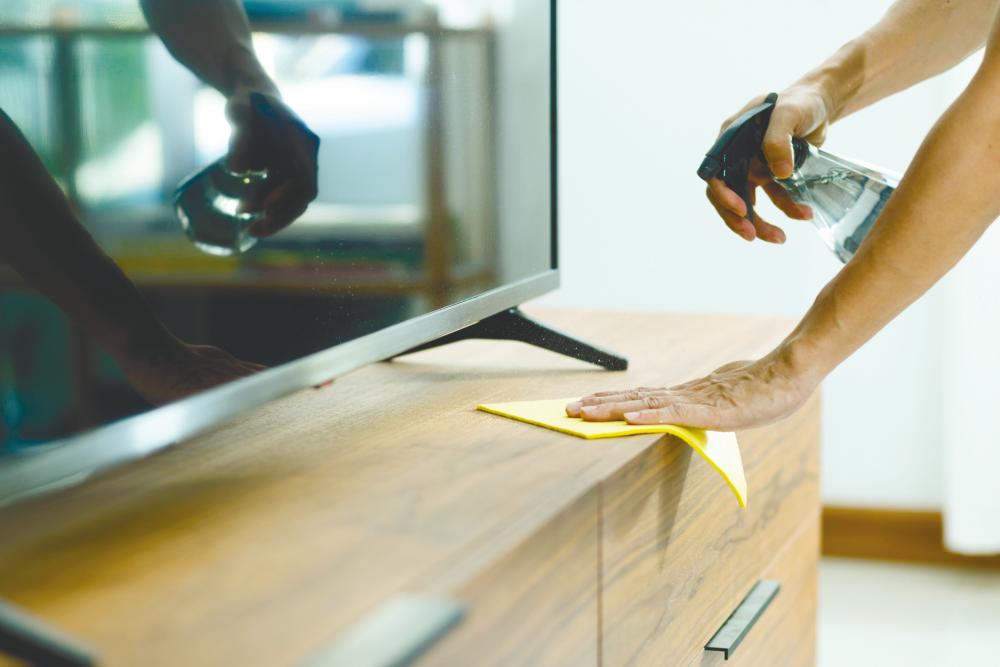This article was first published in theSun Buzz HERE
THE SARS-COV-2 virus which causes Covid-19 isn’t going away anytime soon. Based on an updated study by the Centers for Disease Control and Prevention (CDC), the SARS-CoV-2 virus is less likely to spread by surface contamination than once thought before.
However, it doesn’t mean we can go back to the way we once were. Everyone still needs to practice good hygiene habits and here are a few tips on sanitising the home.
Wash and moisturise hands
One of the very first steps we can take is to remember to wash our hands with soap daily. It’s especially important to wash our hands after coughing, sneezing or when we return home after getting groceries. While the virus is less likely to spread by surface contamination, the risk is still there.
The World Health Organisation recommends everyone to wash and scrub their hands for 20-seconds, which is about the duration of a Happy Birthday song. If you cannot find a sink and soap to wash your hands, a hand sanitiser works just as well.
A hand sanitiser isn’t a cure-all but it helps keep germs and viruses at bay.
Frequently washing our hands with soap can dry out our hands fast too. As such, it’s important to remember to moisturise our hands after washing. This is because dry, cracked skin increases our risk of getting infections.
Clean and disinfect high-touch surfaces
Cleaning and disinfecting are two very different things. Cleaning removes contaminants from the surface while disinfecting kills the pathogens. Hence, it’s beneficial to carry out both cleaning and disinfecting especially if you have had visitors over.
To make the task as seamless as possible, the first place to clean and disinfect is the high-touch surfaces in the home. High-touch surfaces are areas where it’s frequently touched such as doorknobs, table surfaces, chairs, kitchen counters, faucet and faucet knobs, toilet seats and the flush handles, light switches and TV remote controls.
To clean, wipe the surface with a hand towel and soapy water or a cleaning spray. This helps to remove the layer of dust and debris. The next step is to disinfect. To do this, apply a surface-appropriate disinfectant using disinfecting wipes or disinfecting spray.
According to the head of infection prevention and control at the Oregon Health & Science University Dr John Townes, if a disinfectant has an indication for killing influenza, RSB, SARS virus or other coronaviruses, “it should work against” SARS-CoV-2 virus too.
If you are out of disinfectants at home, you can make your own homemade bleach disinfectant spray. Just mix four teaspoons of household bleach and one litre of water into a spray bottle and shake it vigorously.
Spray the homemade bleach disinfectant on the surface and leave it for 10 minutes before wiping it away with a wet cloth.
Remember to wear gloves and keep the windows open if you’re cleaning using bleach. Do not mix bleach with other cleaning products and be aware that bleach can damage or discolour sensitive surfaces.
Disinfect your gadgets
Another high-touch surface is our gadgets such as our smartphones, laptops, gaming consoles and tablets. To disinfect our smartphones and tablets, use a disinfecting wipe or alcohol solution (at least 70%).
Make sure the front screen, buttons, sides and the back of the smartphone and tablet are wiped down. It’s also important to wipe down the phone and tablet covers too.
When it comes to cleaning our laptops and computers, avoid using disinfecting wipes on the screen. This is because laptop displays aren’t always made of glass.
For example, matte displays are plastic and wiping them with a strong solution may cause damage. To make sure the gadgets are cleaned safely, wipe the surfaces such as keyboard, trackpad, mouse and the exterior surfaces with isopropyl alcohol (70%) solution and a soft towel.
Shower and wash all clothes upon returning home
Similar to washing hands, it’s good to quickly shower and throw all the worn clothes into the washing machine upon returning home. While we may be masked up, we can’t be sure if the sneeze and cough particles or other contaminants are stuck to our clothes and hair.
The usual laundry detergent does a good cleaning job. However, you can wash the clothes in the warmest appropriate water setting to be safe. This is helpful if you’re washing the clothes of someone who’s sick or is under home quarantine.
Disinfect bedrooms and bathrooms when someone is sick
If you find yourself having a family member under home quarantine, it’s important that they have a separate bedroom and bathroom to use.
Since no one can clean up their room, it’s helpful to provide them with some cleaning and disinfecting supplies too. Cleaning and disinfecting supplies to be included are disinfecting wipes, hand sanitisers, tissues and paper towels.
If the person in-home quarantine can’t clean, the person who’s going into the room to clean and disinfect must wear a mask and put on gloves. It’s important to limit contact with the person who’s sick so just clean the areas around the person. Last but not least, it’s good to open windows to increase air circulation at home.
With these tips, hopefully, everyone will be able to keep safe and lessen the spread of Covid-19 infection.









